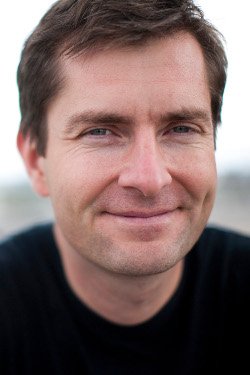David Charbonneau
2016 National Award Winner — Faculty

Current Position:
Professor of Astronomy
Institution:
Harvard University
Discipline:
Astrophysics & Cosmology

Current Position:
Professor of Astronomy
Institution:
Harvard University
Discipline:
Astrophysics & Cosmology
Recognized for: Pioneering discoveries in the field of exoplanets and the development of novel observational methods to detect and characterize exoplanets with the ultimate goal of discovering habitable worlds
Areas of Research Interest and Expertise: Detection and characterization of exoplanets with the goal of studying inhabited worlds; Development of novel observational methods in support of these efforts; Stellar astrophysics focusing on nearby solar and low-mass stars as planet hosts
Biography:
PhD, Harvard University
BSc, University of Toronto
David Charbonneau’s research focuses on the discovery and characterization of planets orbiting other stars, with the ultimate goal of identifying inhabited worlds. He was the first to observe a planet eclipse its parent star; this method, known as transits, is now the means by which most planets outside the solar system have been identified. He also developed the first methods which astronomers use to study the atmospheres of these distant worlds.
Dr. Charbonneau currently directs the MEarth Project, which aims to find the first habitable exoplanet that can be searched for the chemical signatures of life; and The Alien Earths Initiative, an interdisciplinary collaboration that develops the tools with which to undertake that characterization.
David Charbonneau was a member of the NASA Kepler Mission, and he is a co-investigator in the upcoming NASA TESS Mission, scheduled for launch in 2017.
“For generations, humans have looked up at the stars and wondered if there existed inhabited worlds other than our own. We are the first generation in human history with the technological ability to answer that question.”
Key Publications:
Other Honors:
2016+ Harvard College Professor
2012 The Raymond and Beverly Sackler Prize in the Physical Sciences, Tel Aviv University
2011 Fannie Cox Prize for Excellence in Science Teaching, Harvard University
2009 Alan T. Waterman Award, National Science Foundation
2007 Scientist of the Year, Discover Magazine
2006/11 David and Lucile Packard Fellowship for Science and Engineering
2006 NASA Exceptional Scientific Achievement Medal
2006/08 Alfred P. Sloan Research Fellow
2004 Robert J. Trumpler Award, Astronomical Society of the Pacific
2004 Bart J. Bok Prize in Astronomy, Harvard University
2000 Fireman Award for PhD Thesis in Astronomy, Harvard University
In the Media:
"The Genesis Planet" - Did Hubble Observe the Oldest Planet in the Milky Way? The Daily Galaxy. Jun 3, 2016
The Truth about Exoplanets. Scientific American. Feb 17, 2016
Closest rocky exoplanet yet discovered. Ars Technica. Nov 17, 2015
Harvard helps fund most powerful telescope ever built. The Boston Globe. Nov 11, 2015
Top Documentary Films: Leaving and Evacuating Earth. Apr 6, 2015